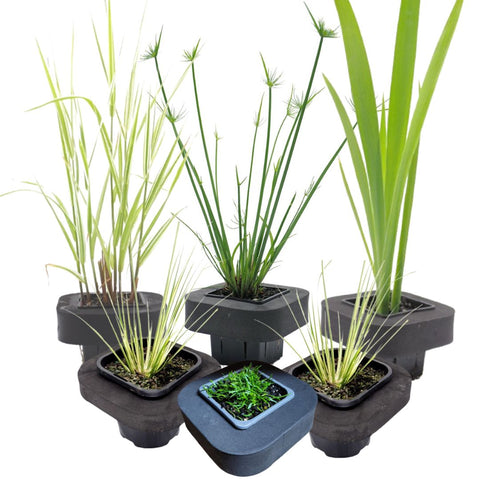The Fascinating Diet of Australian Frogs: A Closer Look at What They Eat in the Land Down Under

Here in Australia, the diet of native frogs proves to be nothing short of fascinating. These remarkable amphibians have a diverse range of culinary preferences that are as unique as the country's wildlife. From insects and spiders to small reptiles and even other frogs, Australian frogs are known to be voracious eaters.
Their diet largely depends on their size and habitat. The smaller species tend to feed on tiny invertebrates, such as insects and spiders, while larger frogs have been observed devouring small reptiles and mammals. Some species even possess a sticky tongue that enables them to catch flying insects in mid-air.
What makes the diet of Australian frogs even more intriguing is their ability to adapt to changing circumstances. In times of drought, they can survive by feeding on their own skin secretions. This unique adaptation allows them to endure harsh conditions when food is scarce.
Join us as we take a closer look at the culinary preferences of Australian frogs, delving into the intricacies of their diet and exploring the fascinating strategies they employ to obtain their next meal.
Types of Food Consumed by Australian Frogs
Australian frogs have a diverse range of food sources, reflecting the country's rich biodiversity. The diet of these amphibians largely depends on their size and habitat, with smaller species typically feeding on tiny invertebrates, such as insects and spiders. Larger frogs, on the other hand, have been observed devouring small reptiles and mammals - think skinks and small mice.
In addition to invertebrates and small vertebrates, Australian frogs also consume a variety of plant matter. Some species feed on aquatic plants and algae, while others may occasionally eat fruits and seeds. The availability of food sources in their environment greatly influences the dietary choices of these amphibians.
It is important to note that the diet of Australian frogs can vary depending on the specific region and habitat they inhabit. Frogs living in rainforests may have access to a wider range of food sources compared to those in arid regions. This highlights the adaptability of Australian frogs and their ability to find nourishment in diverse environments.
Insects and Invertebrates in the Diet of Australian Frogs
Insects and invertebrates form a significant portion of the diet of Australian frogs. These small creatures provide a readily available and energy-rich food source for these amphibians. Australian frogs have developed various strategies to capture and consume insects, showcasing their remarkable hunting abilities.
One such strategy is the use of their unique sticky tongues. Many frog species possess a long, extensible tongue that can be rapidly projected to catch prey. This adaptation allows them to snatch flying insects in mid-air with impressive accuracy. Their tongues act like adhesive traps, enabling them to capture prey quickly and efficiently.
In addition to catching flying insects, Australian frogs also forage on the ground and in vegetation for smaller invertebrates. They use their keen eyesight and agility to locate and capture their prey. Some species have even been observed using their front limbs to dig and uncover buried insects, showcasing their resourcefulness in finding food.
The abundance of insects and invertebrates in the diet of Australian frogs highlights the important role these creatures play in maintaining ecological balance. By controlling the populations of these small organisms, frogs help regulate the overall ecosystem dynamics. In our home gardens and backyard frog ponds, it is important to grow plants that attract these insects and invertabrates to feed our native amphibians. Here at We Know Water Gardens, we are certainly not experts in growing terrestrial plants that will attract food for frogs, we do however know a lot about what pond plants will attract both frogs and the insects they they eat!
Aquatic Plants and Algae as Food Sources for Australian Frogs
 While insects and invertebrates are the primary food sources for Australian frogs, some species also consume aquatic plants and algae. These plant matter provide essential nutrients and fibers that supplement the diet of these amphibians.
While insects and invertebrates are the primary food sources for Australian frogs, some species also consume aquatic plants and algae. These plant matter provide essential nutrients and fibers that supplement the diet of these amphibians.
Some frog species feed on the leaves and stems of aquatic plants, using their mouthparts to tear and consume the vegetation. These frogs often inhabit freshwater habitats such as ponds, lakes, and wetlands, where they have easy access to a variety of aquatic plants.
Algae, which are microscopic organisms, also serve as a food source for certain Australian frogs. These amphibians have been observed grazing on the surfaces of rocks, logs, and aquatic vegetation where algae thrive. They use their mouths to scrape off the algae, ingesting it as part of their diet.
While we have traditionally thought that our ponds or water gardens must look pristine, we now know that by leaving some of what we may consider to be unsightly algae or pond scum ca be beneficial to our frogs. The inclusion of plant matter in the diet of Australian frogs highlights their adaptability and ability to exploit different food sources. In the pond world it is all about striking a balance that can provide both food for frogs as well as controling food sources befoe they become problematic. This flexibility allows our natice frogs to survive in environments where insect populations may be limited, such as during droughts or in regions with seasonal fluctuations in food availability.
How Can We Help to Feed our Native Frogs
 As urban developments, disease and other emerging threats are impacting our native frog populations there are a few things that gardeners can do. Small and inexpensive gestures can assist. Here are a few simple suggestions that we can all do at home:
As urban developments, disease and other emerging threats are impacting our native frog populations there are a few things that gardeners can do. Small and inexpensive gestures can assist. Here are a few simple suggestions that we can all do at home:
Build a frog hotel: If you have a courtyard or a backyard, a frog hotel is a simple project. A frog hotel is a human-made structure designed to provide shelter and habitat for frogs. These structures typically consist of small enclosures or shelters placed in gardens, wetlands, or other frog-friendly environments. Frog hotels may include features such as hiding spots, moisture-retaining materials, and access points for frogs to enter and exit. They serve as refuges for frogs, helping to mitigate threats such as habitat loss, pollution, and climate change. Additionally, frog hotels can contribute to local biodiversity by supporting frog populations and the ecosystems they inhabit.
Add pond plants to attract both frogs and insects: Select a mix of floating, submerged, and emergent plants to provide different habitats and cover for frogs and insects. Floating plants like water lilies provide shade and shelter, while emergent plants such as rushes and sedges offer perching spots for insects and frogs. Consider our native pond plant packs or our frog attracting pond plant packs as they provide a mix of pond plants for habitat and insects.
Make sure that your pond is frog friendly: Add rocks, logs, or other structures around the pond to create additional habitats for frogs and insects. These features provide basking spots for frogs and places for insects to hide and lay eggs.
Avoid the use of chemicals and pesticides: Minimise the use of pesticides and fertilisers around your pond, as these chemicals can harm frogs and insects. Opt for natural alternatives or integrated pest management techniques to control pests if necessary.
Unique Dietary Habits of Specific Australian Frog Species
Within the diverse world of Australian frogs, some species have developed unique dietary habits that set them apart from their counterparts. These amphibians showcase fascinating adaptations and behaviors when it comes to obtaining their next meal.
The Tusked Frog (Adelotus brevis) is a prime example of a species with a specialized diet. This frog possesses robust, protruding lower jaws, which it uses to burrow into the ground in search of food. The Tusked Frog feeds primarily on insects, snails and earthworms, using its powerful jaws to grasp and consume the unsuspecting prey.
Another interesting dietary adaptation is seen in the Australian Waterfall Frog (Litoria nannotis). This species has been observed feeding on mistletoe berries, a behaviour unique among frogs. The frogs perch on branches and pluck the berries with their mouths, demonstrating their ability to exploit unconventional food sources.
Furthermore, some Australian frog species exhibit cannibalistic tendencies, consuming other frogs as part of their diet. The Northern Dwarf Tree Frog (Litoria bicolor) is known to prey on smaller frogs, including its own species. This behaviour highlights the fierce competition for resources in their environment and the adaptability of certain frog species to survive in challenging conditions.
Impact of Diet on the Survival and Reproduction of Australian Frogs
The diet of Australian frogs has a direct impact on their survival and reproduction. Adequate nutrition is essential for their growth, development, and overall health. Insufficient food intake can lead to weakened immune systems, reduced fertility, and stunted growth in frogs.
For female frogs, a nutrient-rich diet is crucial for the production of high-quality eggs. The availability of food sources during the breeding season greatly influences the reproductive success of these amphibians. Females that are well-nourished have a higher chance of producing a larger number of healthy eggs, increasing the likelihood of successful reproduction.
Food availability also plays a vital role in the survival of tadpoles. These aquatic larvae rely on a sufficient supply of food to grow and metamorphose into adult frogs. In habitats where food sources are scarce, tadpoles may experience stunted growth and reduced survival rates, leading to population declines.
Understanding the impact of diet on the survival and reproduction of Australian frogs is crucial for their conservation. By identifying and protecting their key food sources, we can ensure the long-term viability of these amphibian populations and maintain the delicate balance of ecosystems they inhabit.
Conservation Efforts to Protect the Food Sources of Australian Frogs
Conservation efforts aimed at protecting the food sources of Australian frogs are essential for the preservation of these unique amphibians. The loss and degradation of habitats, Chytridiomycosis, pollution, and climate change pose significant threats to the availability of food for frogs.
Chytridiomycosis poses a significant threat to Australian frog populations, driving declines and even extinctions in some cases. This fungal disease, caused by the pathogen Batrachochytrium dendrobatidis, affects the skin of frogs, disrupting their ability to regulate water and electrolytes. Australian frogs, already vulnerable due to habitat loss and environmental pressures, face heightened susceptibility to chytridiomycosis due to factors like climate change and the introduction of non-native species. Conservation efforts are crucial to mitigate this threat, focusing on disease management, habitat protection, and breeding programs aimed at bolstering resistant populations. Learn more here: Winter Frogs in Danger: Boosting Australian Frog Populations with Pond Plants and Habitat Preservation
Preserving natural habitats, such as wetlands, is crucial for maintaining the diverse array of food sources required by Australian frogs. Wetlands support a wide range of plant and animal species, providing ample opportunities for frogs to find nourishment. Protecting and restoring these habitats ensures a sustainable supply of food for frogs.
Reducing pollution, particularly in aquatic environments, is another important step in safeguarding the food sources of Australian frogs. Chemical pollutants can contaminate water bodies, impacting the quality and availability of food for frogs and their prey. Implementing and enforcing strict regulations to minimize pollution is vital for maintaining healthy ecosystems.
Climate change poses a significant challenge to the availability of food sources for Australian frogs. Alterations in rainfall patterns, extreme weather events, and rising temperatures can disrupt the natural cycles of plants and insects, affecting the availability of food for frogs. Mitigating climate change through reducing greenhouse gas emissions and implementing adaptation strategies is crucial for preserving the dietary resources of these amphibians.
Research Opportunities and Future Studies on the Diet of Australian Frogs
The study of the diet of Australian frogs presents numerous research opportunities and avenues for future studies. By gaining a deeper understanding of their dietary preferences and requirements, researchers can contribute to their conservation and develop effective management strategies.
One area of research involves investigating the impact of introduced species on the diet of Australian frogs. Invasive predators, such as feral cats and foxes, can have a detrimental effect on frog populations by preying on them or competing for food resources. Studying the interactions between these introduced species and frogs can provide valuable insights into their dietary dynamics.
Furthermore, research can focus on the nutritional composition of different food sources for frogs. Understanding the nutrient content and availability of specific foods can help identify key dietary requirements for different frog species. This knowledge can then be used to develop targeted conservation strategies and captive breeding programs to ensure the long-term survival of these amphibians.
Studying the dietary preferences of frogs can also shed light on the wider ecological relationships within their habitats. Investigating the interactions between frogs and their prey species can provide insights into the trophic cascades and food webs in which these amphibians are a crucial component. Such studies contribute to our understanding of ecosystem dynamics and the intricate connections between organisms.
The Importance of Understanding the Diet of Australian Frogs for Their Conservation
The diet of Australian frogs is a fascinating subject that offers insights into their unique adaptations and ecological roles. These amphibians display a remarkable diversity in their culinary preferences, ranging from insects and invertebrates to small vertebrates and even plant matter.
Understanding the diet of Australian frogs is crucial for their conservation. By identifying their key food sources and the factors that influence their availability, we can develop effective strategies to protect and restore their habitats. Preserving natural ecosystems, reducing pollution, and mitigating the impacts of climate change are all essential steps in safeguarding the dietary resources of these amphibians.
Continued research on the diet of Australian frogs offers promising avenues for future studies. By deepening our knowledge of their dietary preferences and requirements, we can contribute to their long-term survival and ensure the preservation of their unique ecological roles in the land down under.
© weknowwatergardens 2024



